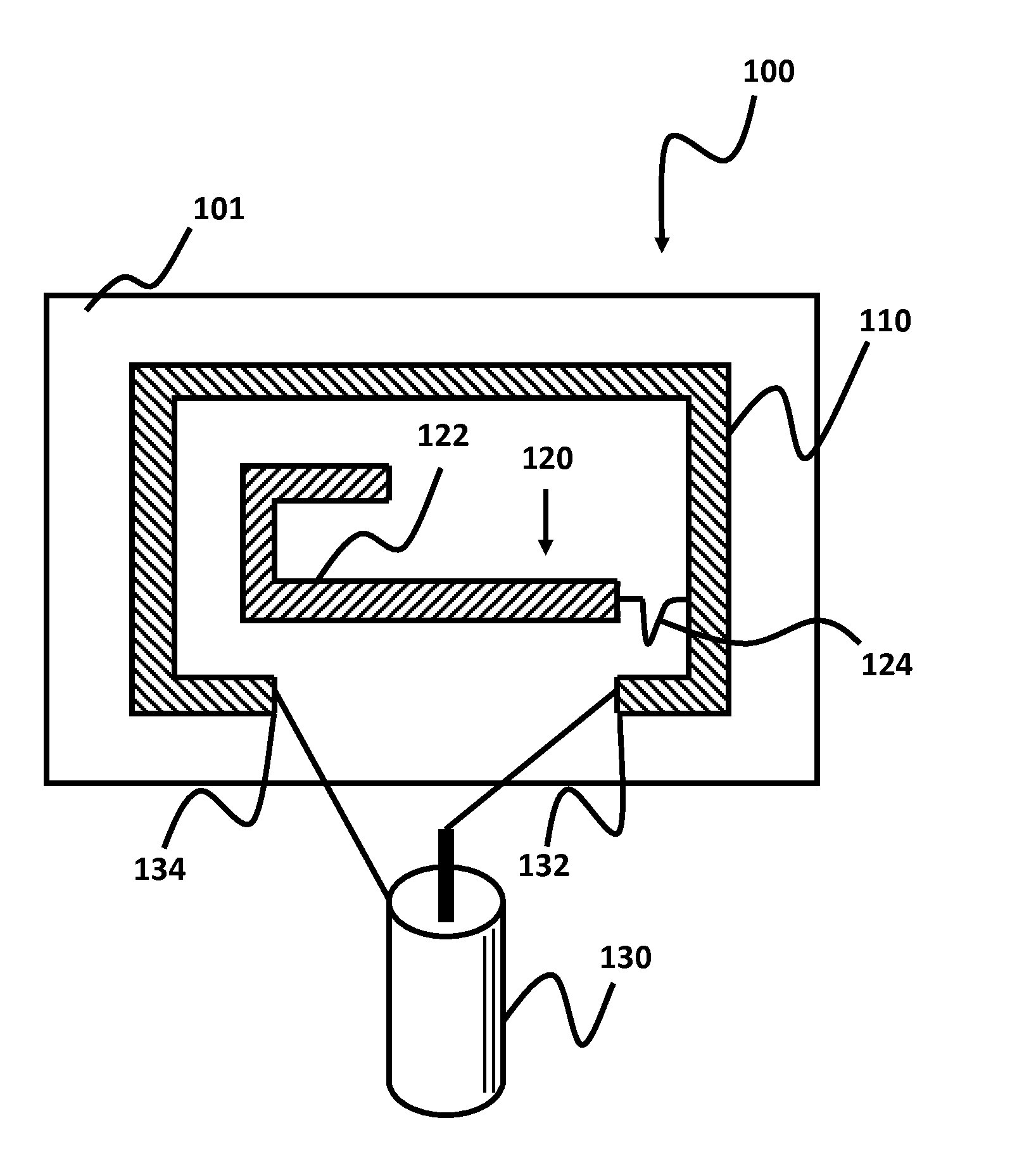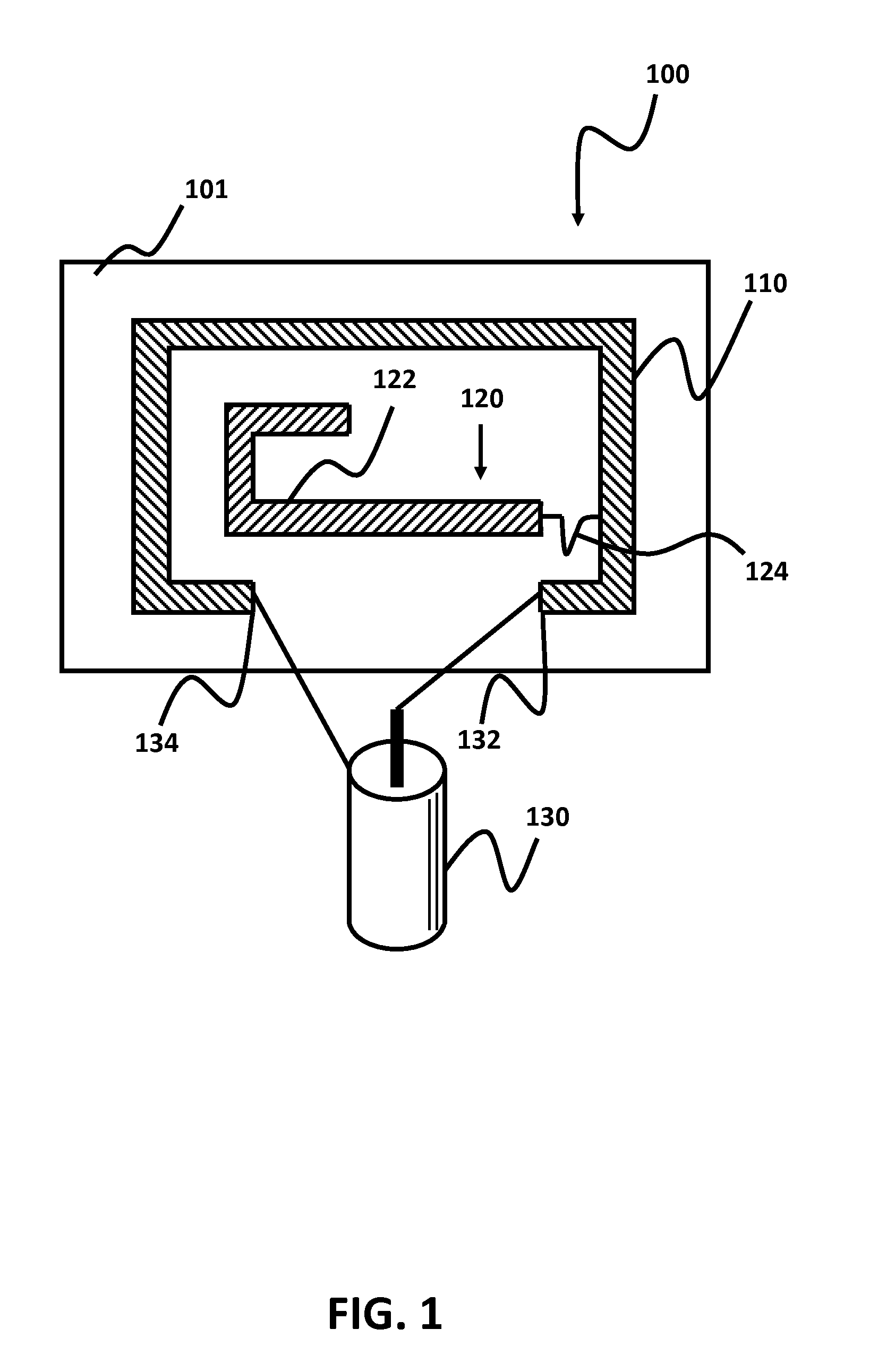Self-contained counterpoise compound loop antenna
a self-contained, compound antenna technology, applied in the direction of individual energised antenna arrays, loop antennas with ferromagnetic cores, resonant antennas, etc., can solve the problems of low received power than would otherwise be possible, not typically suitable for transmitters, and small loop antennas that cannot be used in practi
- Summary
- Abstract
- Description
- Claims
- Application Information
AI Technical Summary
Benefits of technology
Problems solved by technology
Method used
Image
Examples
Embodiment Construction
[0040]Embodiments provide an improved planar, compound loop (CPL) antenna, capable of operating in both transmit and receive modes and enabling greater performance than known loop antennas. The two primary components of a CPL antenna are a magnetic loop that generates a magnetic field (H field) and an electric field radiator that emits an electric field (E field).
[0041]The electric field radiator may be physically located either inside the loop or outside the loop. For example, FIG. 1 shows an embodiment of a single CPL antenna element with the electric field radiator located on the inside of the loop coupled by an electrical trace, while FIGS. 3A and 3B show two embodiments of a single CPL antenna element with the electric field radiator located on the outside of the loop. FIG. 3A, as further described below, includes a phase tracker for broadband applications, while FIG. 3B does not include the phase tracker and is more suitable for less wideband applications. FIGS. 4A, 4B and 4C ...
PUM
 Login to View More
Login to View More Abstract
Description
Claims
Application Information
 Login to View More
Login to View More - R&D
- Intellectual Property
- Life Sciences
- Materials
- Tech Scout
- Unparalleled Data Quality
- Higher Quality Content
- 60% Fewer Hallucinations
Browse by: Latest US Patents, China's latest patents, Technical Efficacy Thesaurus, Application Domain, Technology Topic, Popular Technical Reports.
© 2025 PatSnap. All rights reserved.Legal|Privacy policy|Modern Slavery Act Transparency Statement|Sitemap|About US| Contact US: help@patsnap.com



